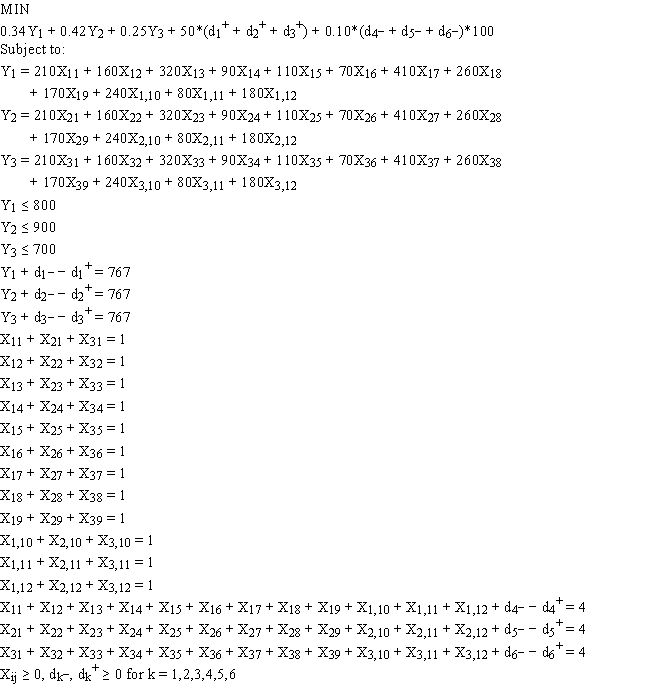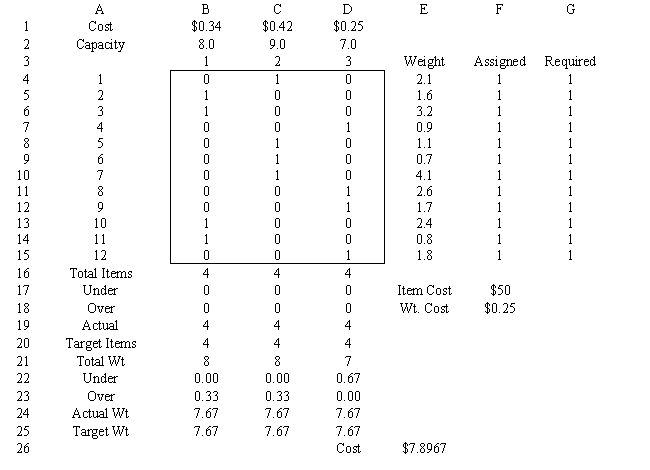Essay
Exhibit 7.4
The following questions are based on the problem below.
Robert Gardner runs a small, local-only delivery service. His fleet consists of three smaller panel trucks. He recently accepted a contract to deliver 12 shipping boxes of goods for delivery to 12 different customers. The box weights are: 210, 160, 320, 90, 110, 70, 410, 260, 170, 240, 80 and 180 for boxes 1 through 12, respectively. Since each truck differs each truck has different load capacities as given below:  Robert would like each truck equally loaded, both in terms of number of boxes and in terms of total weight, while minimizing his shipping costs. Assume a cost of $50 per item for trucks carrying extra boxes and $0.10 per pound cost for trucks carrying less weight.
Robert would like each truck equally loaded, both in terms of number of boxes and in terms of total weight, while minimizing his shipping costs. Assume a cost of $50 per item for trucks carrying extra boxes and $0.10 per pound cost for trucks carrying less weight.
The following integer goal programming formulation applies to his problem.
Y1 = weight loaded in truck 1; Y2 = weight loaded in truck 2; Y3 = weight loaded in truck 3;
Xi,j = 0 if truck i not loaded with box j; 1 if truck i loaded with box j.  Given the following spreadsheet solution of this integer goal programming formulation, answer the following questions.
Given the following spreadsheet solution of this integer goal programming formulation, answer the following questions. 
-Refer to Exhibit 7.4. Based on the integer goal programming formulation, the associated solution, and spreadsheet model, what formulas should go in cells B19:E19 and B24:E24 of the spreadsheet?
Correct Answer:

Verified
Correct Answer:
Verified
Q51: A company needs to supply customers in
Q52: The d<sub>i</sub><sup>+</sup>, d<sub>i</sub>− variables are referred to
Q53: A company makes 2 products A and
Q54: Goal Programming and Multiple Objective Optimization are
Q55: In MOLP, a decision alternative is dominated
Q57: A MINIMAX objective function in goal programming
Q58: In the "triple bottom line" the term
Q59: The deviational variables represent the amount by
Q60: Exhibit 7.3<br>The following questions are based on
Q61: The d<sub>i</sub><sup>+</sup> variable indicates the amount by